
Payawar
Jojit Solano
Art Fair Philippines 2020 / February 20 to 23, 2020
Payawar, which is a word from Pangasinan that denotes vision, is a portrayal of a biblical prophecy. It is a vision that appeared in as an ominous warning that many will attempt to come in the Lord’s name, and maneuver an antithetical and deceptive message. Through the rhetoric and perspectives of the New Testament, a concise historical sketch of the roots of the counterfeit was attributed. As predicted, this counterfeit will distort and corrupt the truth, and shall grow to become more powerful and influential than the other.
During the early Renaissance, people have been introduced to an image of an altar that declare the consecration of its contents which are often religious in nature. An altarpiece is then used to represent sacred objects, and symbols that depict Christ, accompanied by a retinue of various holy figures including a titular saint of the church, the Apostles, and the Evangelists. In this exhibit called Payawar, the altarpiece will be used as a symbol of what the artist deem to be the Counterfeits and the False Prophets. They will be the subject of Solano to depict the spurious teachers who promulgate a distorted gospel of lawlessness and a Church motivated by greed for power and influence.

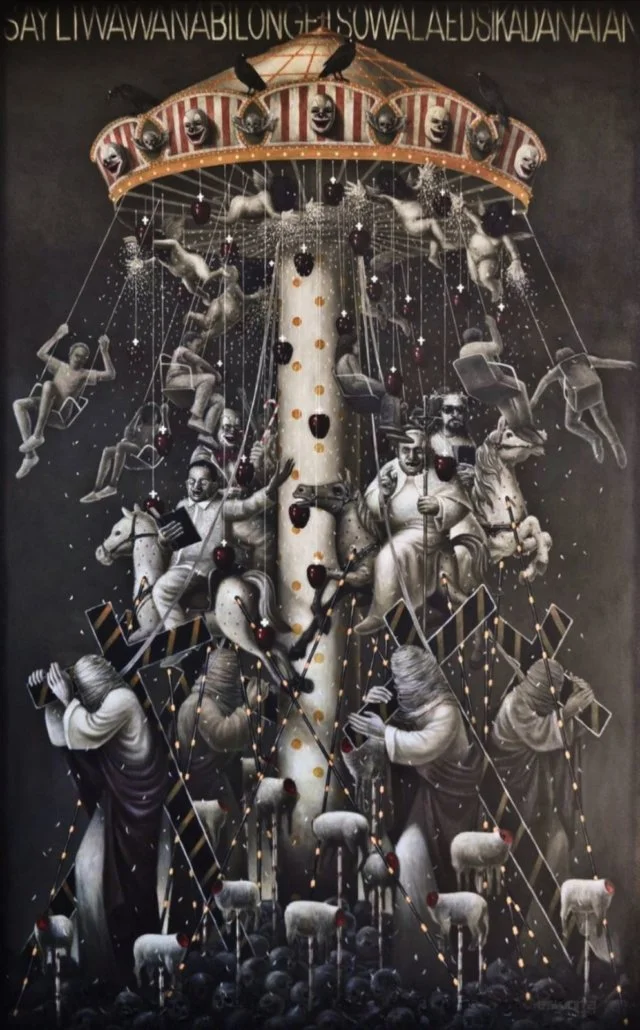
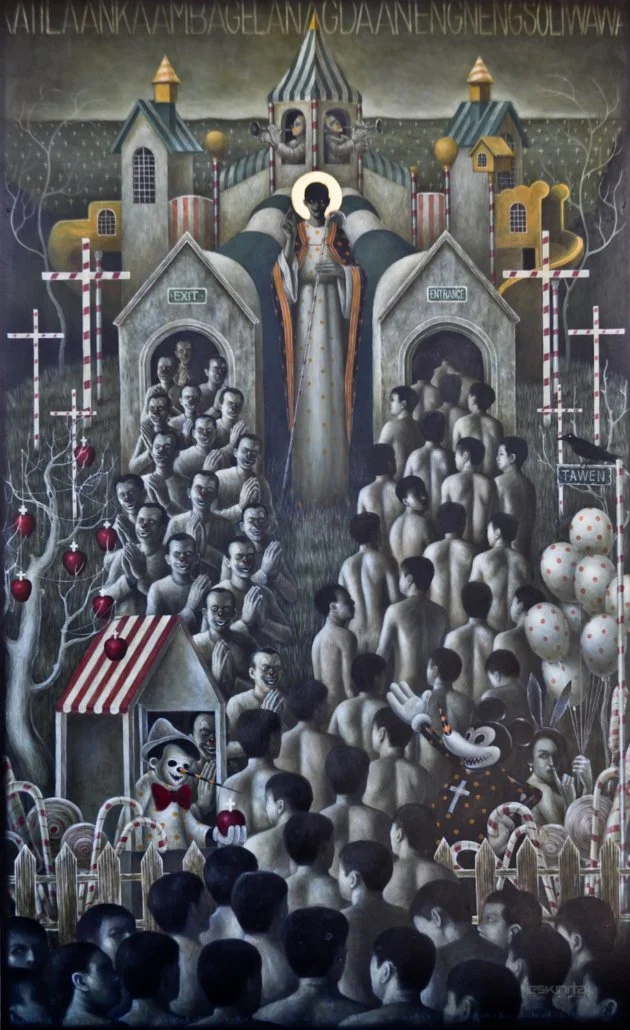

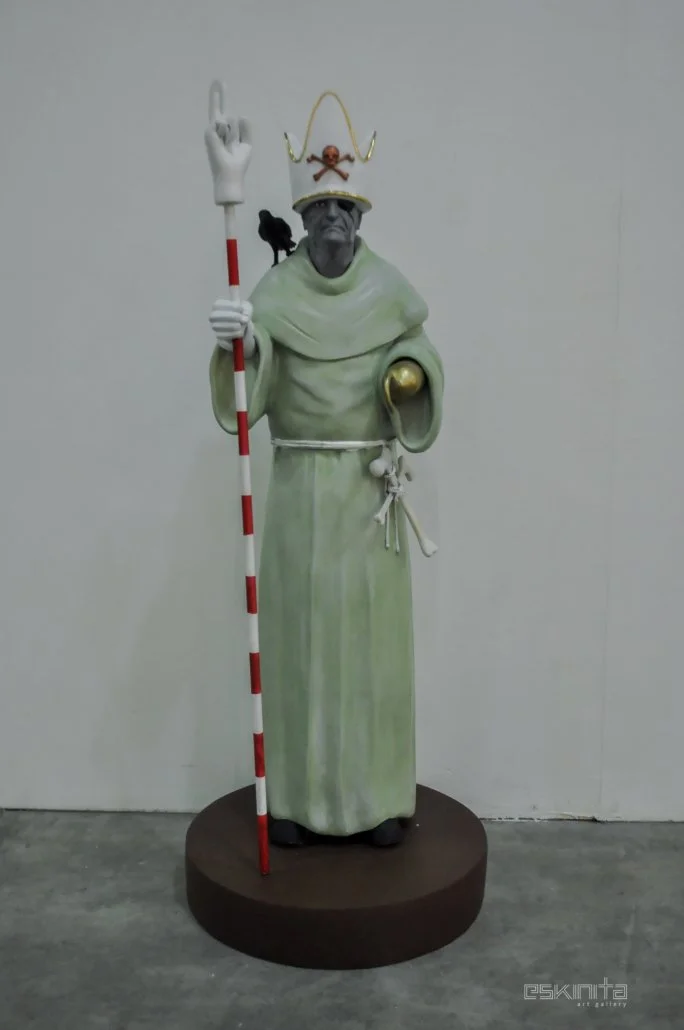

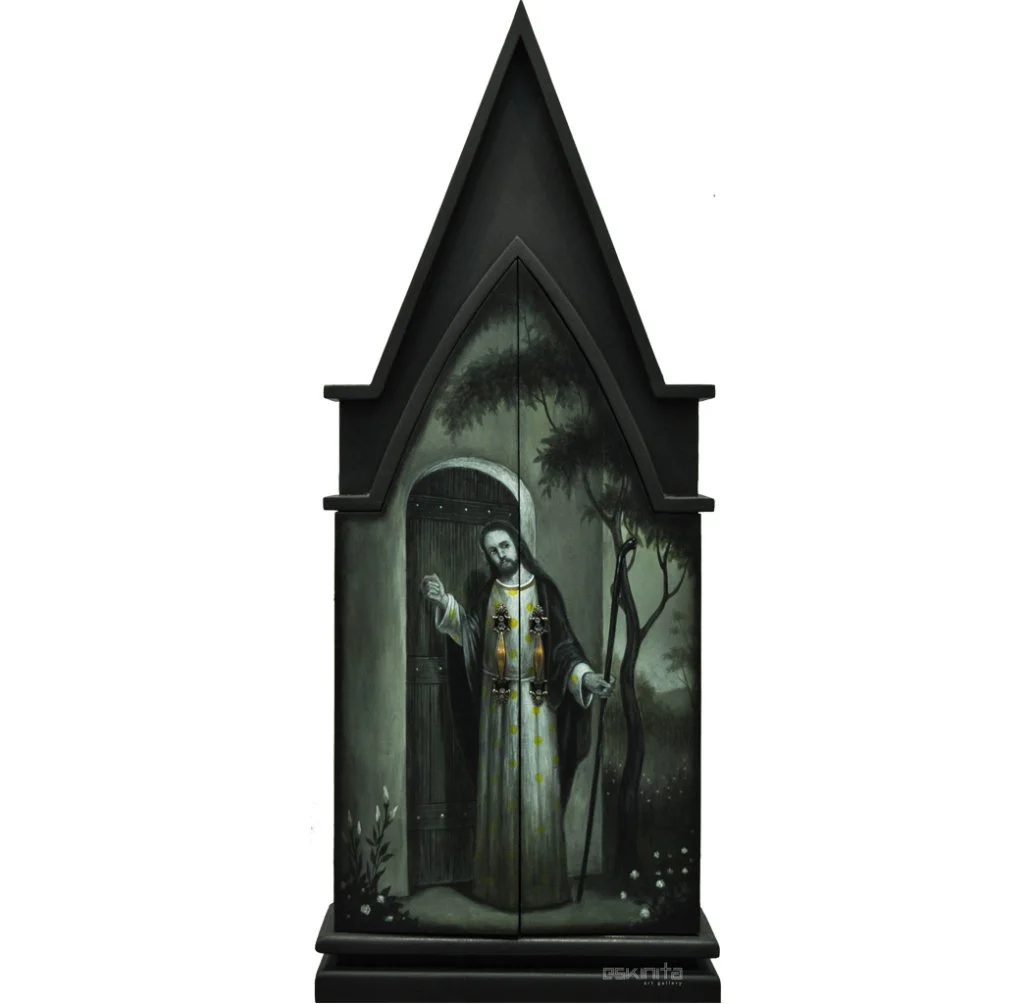
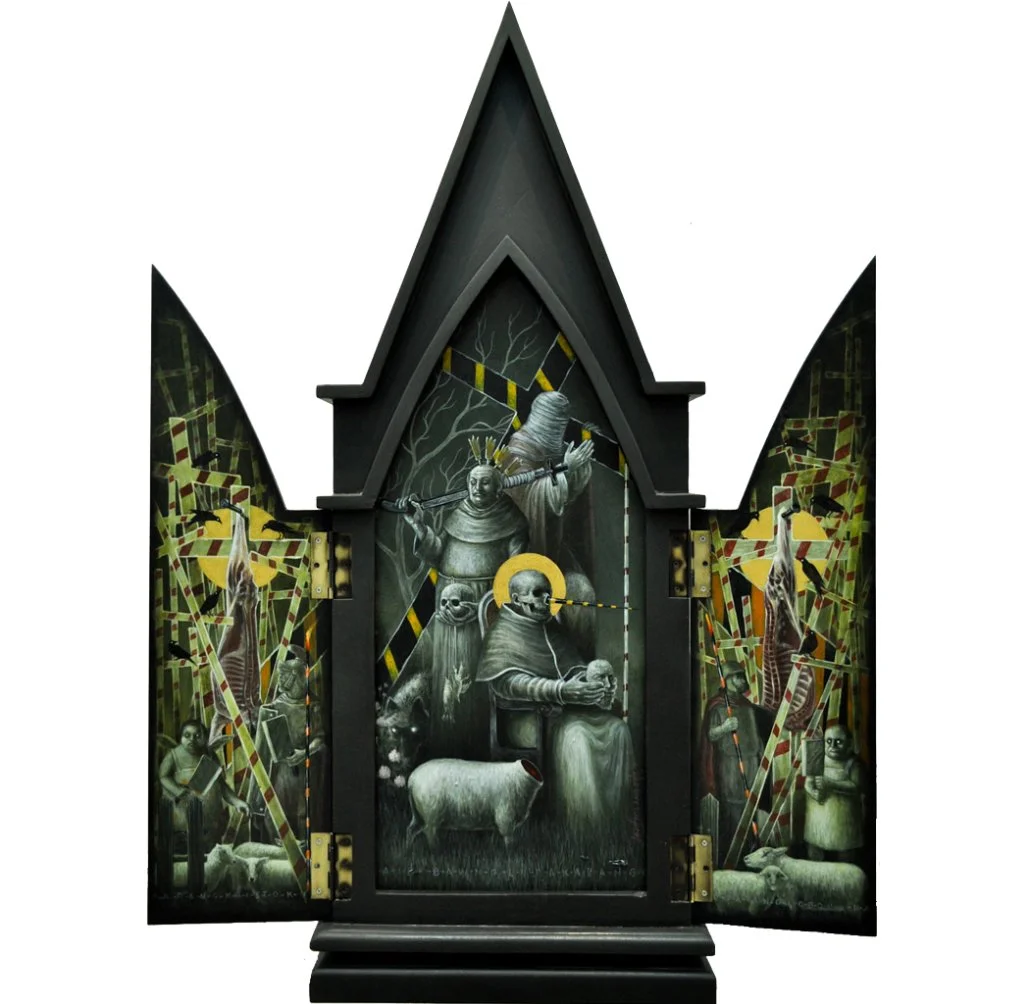
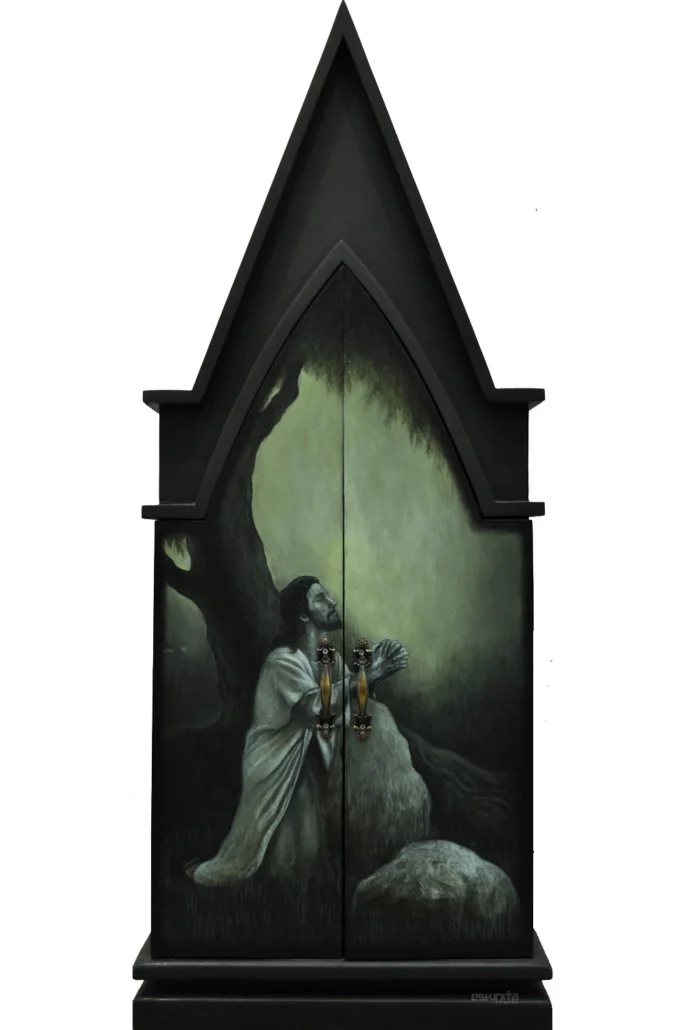
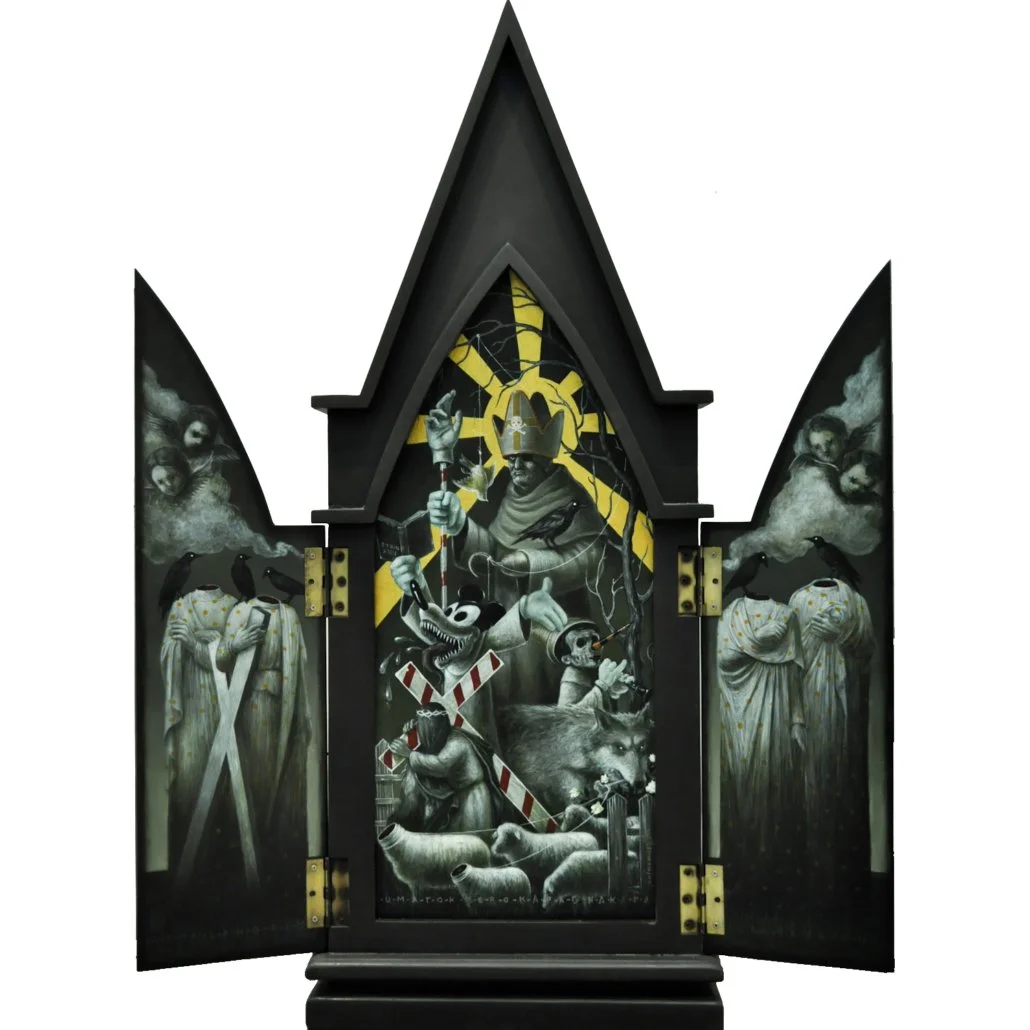
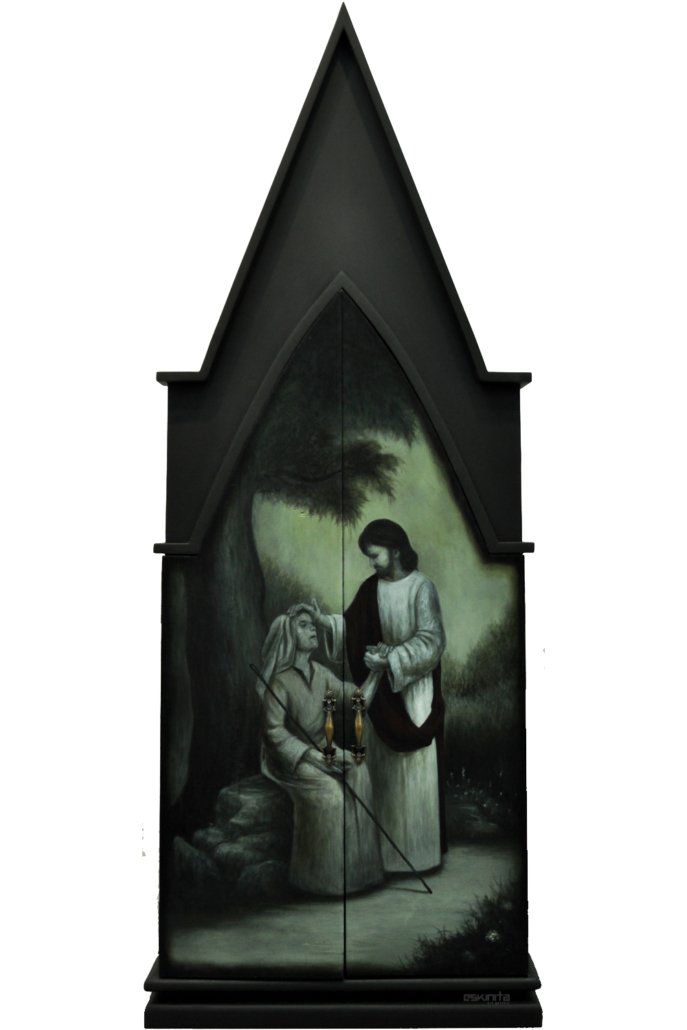
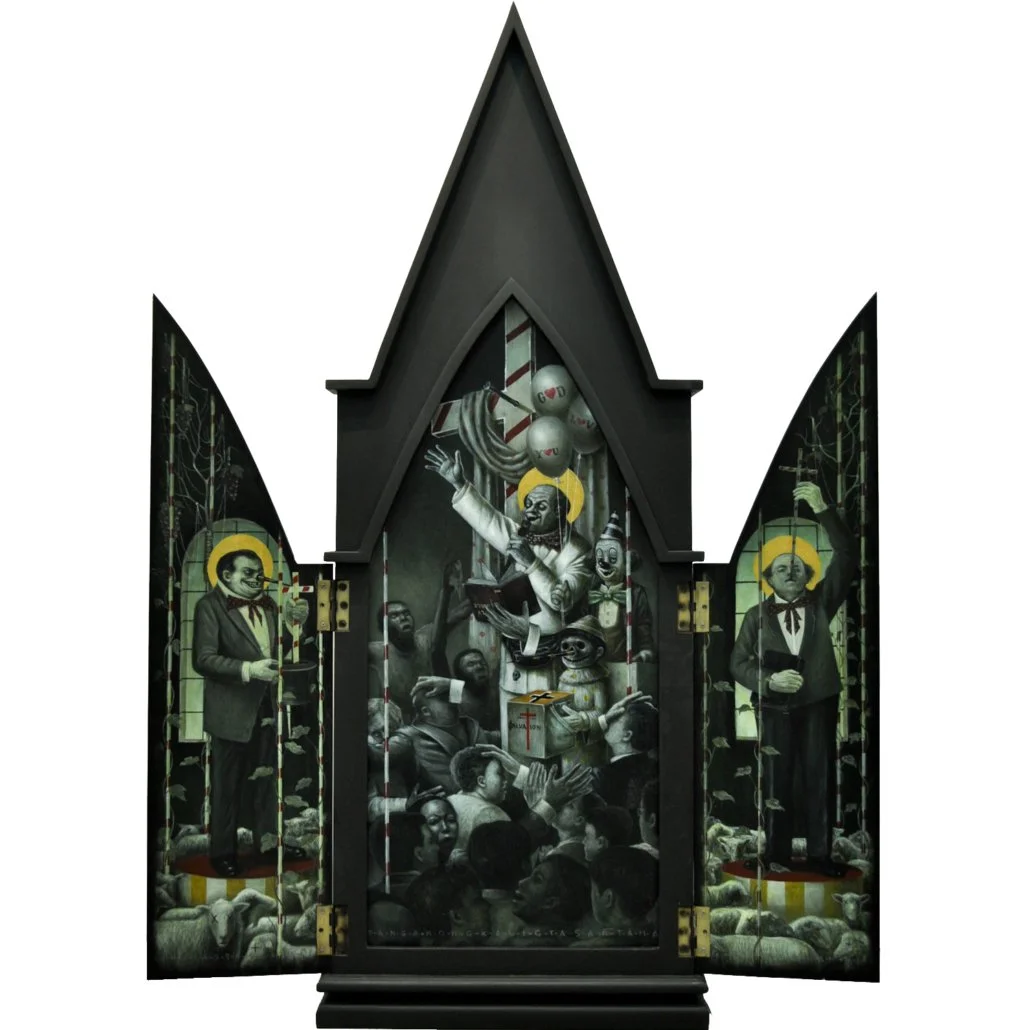
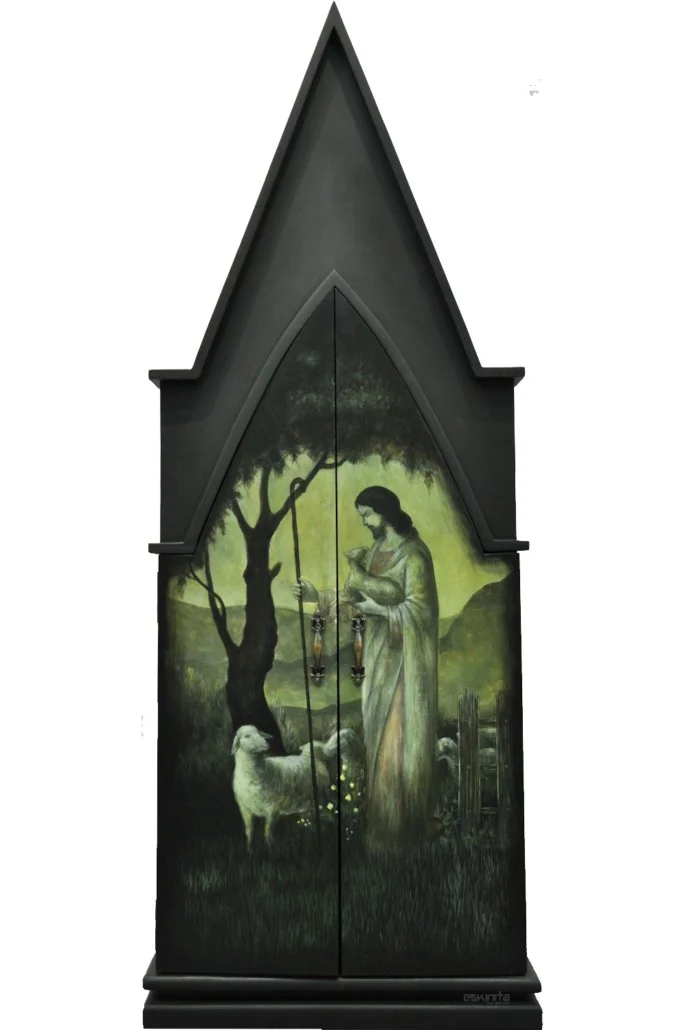



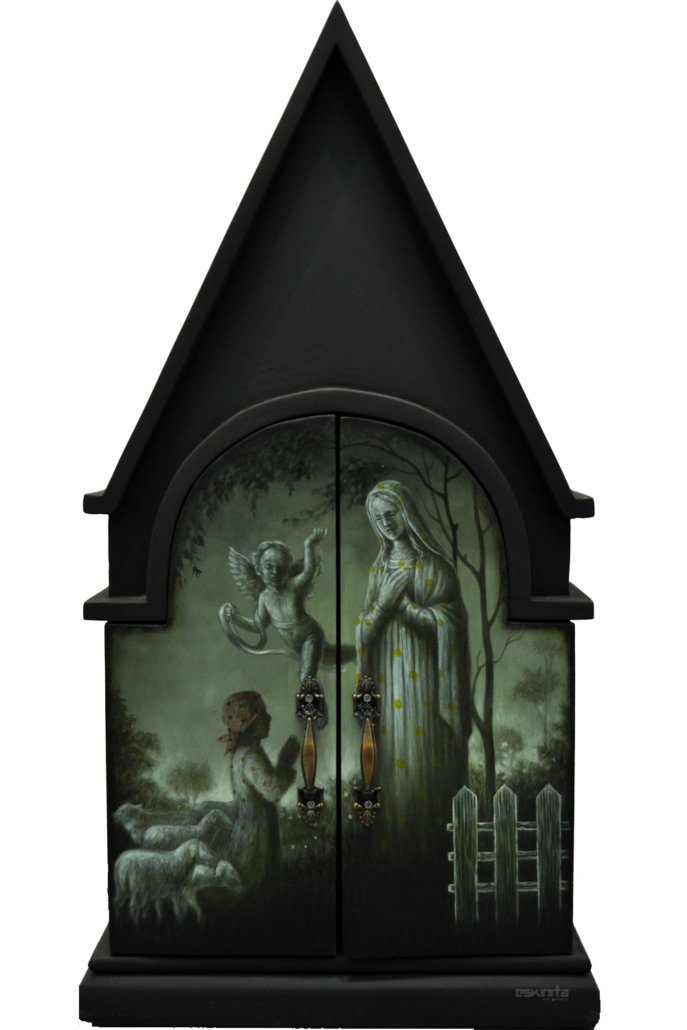

The exhibit take heed of that biblical prophecy equipped with Solano’s own ironic direction that playfully stitches the events that transpired in the past with how it was predicted. In Solano’s centerpiece entitled Ang Duplo sa Karagatan ng Manipuladong Senakulo, he begins the inauspicious arrival of an enthralling and illuminating impostor located at the very center frame of this altar. This focal image is surrounded by other subjects who appear to be his followers. Masked by their exuberant and theatrical disposition, their audiences located in the bordering frames of the altar emerge to be mesmerized by their very performance. These audiences, presented by the artist as blind and transfixed on the impostor, was his manifestation of the False Messiah’s misdirection that leads a populace astray. The lower frame of the altarpiece illustrates the tragedy that befalls those who stood to believe in the real teachings of Christ. In Christ’s death, the people who followed his teachings experienced their own griefs, adversities, and ordeals – deceived and even slaughtered by the fraudulent. Being located at the lower frame of the altarpiece merely renders this event in periphery or unimportant as the False Prophets are the ones in power.
The title of the centerpiece duplo and karagatan are both archaic literary practices in Philippine tradition. They are performative and poetic in nature designed to be a requiem or an entertainment for people grieving for their late loved one. A senakulo on the other hand is a Passion play that recollects the life, hardships, death, and the resurrection of Christ, and their respective symbolisms in merit of the values that He stood for. In this regard, the impostor and his false prophets, had risen and had been enabled by their use of fancy and flowery words to indoctrinate. The duplo and karagatan were aimed to misdirect and deceive even the most devout and twisted the very essence of what Christ stood for starting in his absence.
In the six smaller altarpieces, the idea of false prophets is manifested. The work entitled Ang Milagro ng Ikapo ni Pastor Salamangkero, portrays an image of Christ just as he was healing a blind person – his notorious miraculous deed repeatedly told in Church teachings. This phenomenal feat is demonstrated in a flawed context with the image presented in the opened altarpiece. The religious leader used flare and captivating tricks to pass on as miracles, and ask for Ikapo or money in exchange for these miracles.
The altarpiece called Sunday Morning Service of the Atatapis exhibits an image of Christ as a pastor who carries his sheep. This was a biblical representation of a good shepherd who gathers his lambs in his arms, and carries them close to his heart. An alternate version of this is presented by the Counterfeit, and is what one would see when the altarpiece opens. Here you see a multitude of preachers dressed in the most flamboyant ensemble that parade themselves as clowns. These preachers treat their duties as a business, they sing hallelujah emptily, and make fool of themselves and the word of God. Here you see the opposing sincerity of Christ’s leadership replaced with the comical amusement of the false preachers who seem holy on Sundays, yet rotten for the rest of week.
Ang Patutot at ang Doktrinang Kulobot is an altarpiece that presents the divinity and holiness of the Mother. But inside, you see the rottenness presented by the Counterfeit. They direct the flawed image of a woman and put them as an object of desire.
House of Flies in the Fake Paradise is a portrayal of Christ waiting for a non-believer to invite him in. This is a prophetic symbolism of Christ’s teachings and values to impart love that entrails the attainment of the Kingdom of God on earth. This very act however, also resonates with the idea of a Trick or Treat that kids in costumes do during Halloween. So on the contrary, the Counterfeit knocks on people’s doors, dressed in their colorful robes, and tricks people with the same promise of a Paradise. They vow to give prestige, money, power and solidarity, which are the main ingredients of the evil structures that compose and strengthen the false prophets.
In a Passion or Senakulo, Christ’s agony in the garden is constantly regarded as a representation of fervent devotion and submission amidst anxieties, stress, fear, and anger. Senakulo sa Kamay ng mga Uwak at Lobo particularly introduces the image of
Christ’s determination despite the anticipated hours ahead of him. For the uwak and lobo or crows and wolves respectively, they use these sufferings as a way to be of service to temporal retributions and impose an even greater wickedness unto the world. In the side frames of the opened altarpiece, you see the headless images of the executed subjects. One interpretation for this could be the beheading of those who stood for Christ by those seated in power and were given the authority to judge. They weaken those who are ardent devotees, and blind those who are left.
In the biblical chapter about Malakias or Malachi, people have been doubting the Lord because of its eschatological expectations that remain unfulfilled. It was a chapter that calls for fidelity, and the necessity of sincere worship as it leads the immanent day of judgment. In Ang Pag Gasgas sa Kapitulo ni Malakias, Christ was carrying his cross to depict this very message of the book of Malachi. He reminded people of their moral responsibilities and called to carry their own cross and ironically, make a choice for life. On the contrary, the Counterfeit ignores the very idea of Christ’s cross and used it to weaponize and dominate the world for their own selfish reasons. They make people live without consequences and use religion to gain wealth and power. These are the people who has caused Christ’s pain and suffering, the people who He was opposed to in the first place. And yet, they continue to be a prevailing menace on the face of the earth.
The work Lupa or earth is a world replete with suffering, where prestige and status were the norm. This is where the evil reigned supreme. The Counterfeits mount on a merry-go-round as they ride on people for amusement and selfish reasons. This was evident in the decapitated figures of those who are below them, and the blinded nature of those who they fooled to follow the flawed and distorted message of Christ.
These leaders direct the populace to a spiral pursuit of prestige, money, solidarity and power. In prestige, these Counterfeits are placed in the upper area of the social ladder, they have a higher status and are thus placed at the top of the merry-go-round – a status based upon ancestry, wealth, authority and virtue. Money became their master and they are thus more concerned about wealth and material possessions. The Counterfeits are also concerned about the solidarity of their own groups, that are exclusive to their own circle. This strengthens their power and desire for domination. This is the kingdom of the Counterfeit that is manifested upon the earth – of hypocrisy and heartlessness, and the merciless avarice and oppression of the ruling class.
In Impyerno or hell, Solano depicts a world as it has been described in Dante’s inferno – an entire landscape of suffering and endless retribution. Rooted from the original sin of Adam and Eve, both depicted at the lower area of the canvas, human beings continued and have been born inheriting this original sin of the world. Meaning, there is already a social dimension of sinful structures that function on injustice, oppression, and exploitation. The particular darkness of the canvas then portrays the interior dimension of original sin or the heart of darkness within us. This inclination to sin comes from sin and inclines one to sin. At the upper right portion of the canvas, the artist even drew himself to be part of the entire scenery marking himself subject to the same constitution of a sinful society.
Here, human beings have learned to become lovers of worldly possessions. They have become boastful, proud, abusive, and unforgiving. Ingrained with the first disobedience of the Lord’s will, human beings have spiraled to advance into becoming brutal lovers of themselves, anthropocentric, and conceited. All of which leads to the judgment that befalls the dreadful sphere of hell.
In Langit or heaven, he illustrated the promise of heaven above the earth, the main message of the coming of Christ. Here you see the systematic puppetry of a false preacher. He would make the populace fervently and intensely believe in a faith to the point of thoughtlessly being convinced that it would grant an automatic and irrevocable salvation. This belief shall then refuse to encourage them to act and deeply think on what is morally good or evil. Because of the fanciful promise of this doctrine, people are led astray.
In the six interactive altarpieces, there was a constant juxtaposition of Christ or the teachings of Christ with a respective Counterfeit. The misleading horrid ways of the Counterfeit presented is also outright flawed in itself. In Ang Milagro ng Ikapo ni Pastor Salamangkero, Solano used the miracle of Christ as an example of His teaching. Christ healed a blind, and to provide an addition to the list, He also multiplied the fish and bread to feed a thousand. The magical implication and impossibility of this prophetic deed is what the Counterfeit used to resonate their teachings with: a flared and blazing promise.
The artist’s visual language, while morbid and graphic, entrails a gut reaction. Being situated in a sinful and defective society as presented in Payawar, human beings’ capacity to love above all is hindered, and their potential to become their true selves is affected. Perhaps this portrayal warrants an appeal for the current state of affairs on earth. That perhaps what healing the blind meant was faith of one person awakening a faith in the other, making him see. That perhaps what the multiplication of fish and bread meant was just a mere form of people expressing generosity where everybody contributed their own resources, enough for everybody to share. That perhaps fulfilling the true promise of the kingdom of God that people so passionately seek, is actually actively achieving that very kingdom here on earth, when the poor would no longer be poor, the hungry would be satisfied, and the oppressed would no longer be miserable. An thus, maybe this vision or Payawar is a mere call for a discernment, and to seek knowledge of the truth of things.
–Karen Tesalona

